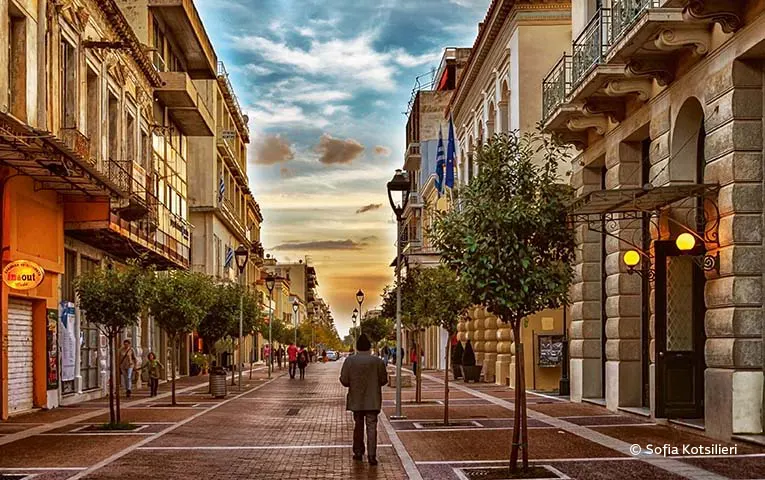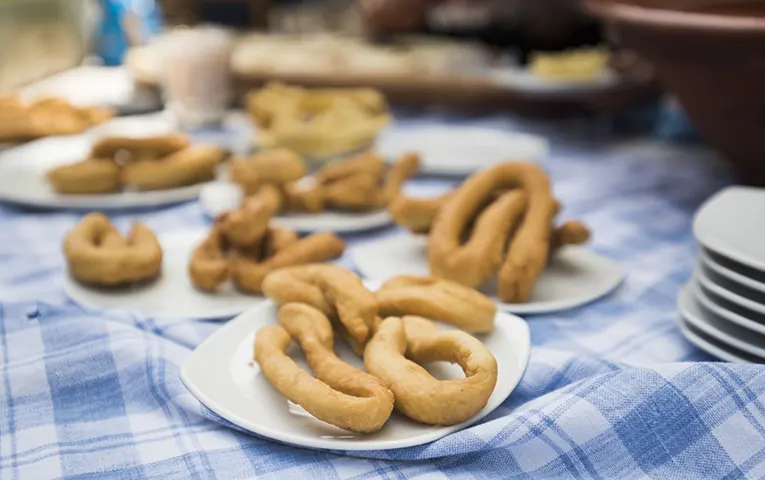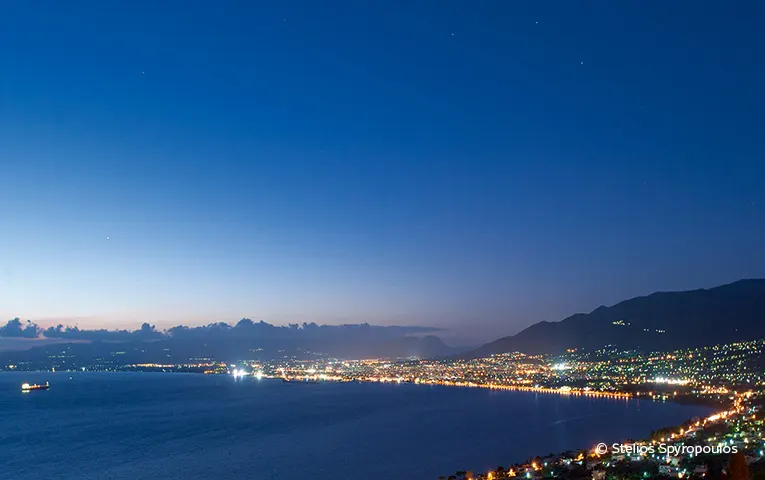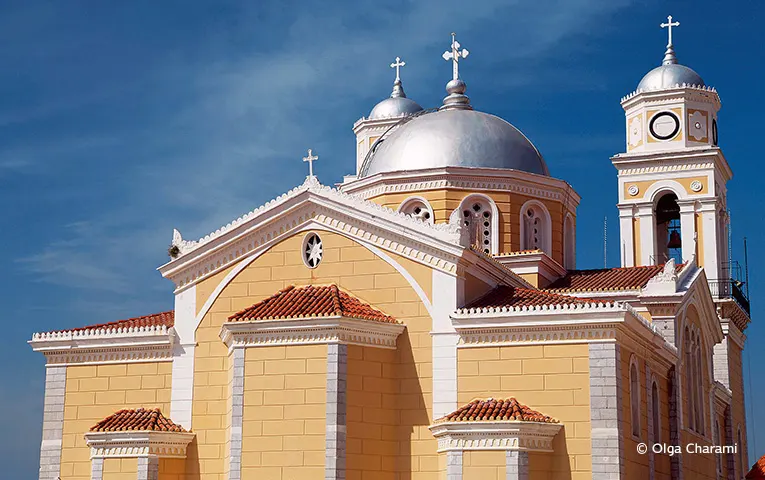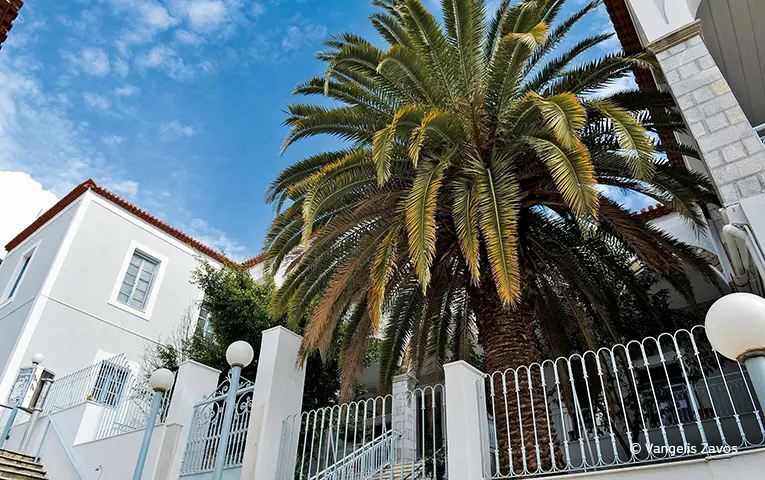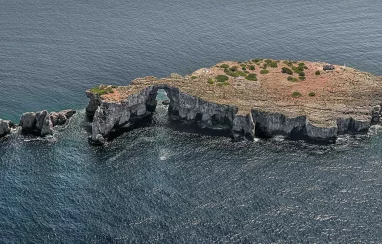1. For a memorable first impression: The seafront
Once upon a time, ships laden with select Messinian products would set sail from the port of Kalamata to major trading posts such as Constantinople, Smyrna, Trieste, and Marseilles. In the early 1900s, Kalamata was the fifth most important port in Greece. Today, it has become a key component of the country’s tourism industry, a cruise ship stopover, and a must-see destination for visitors. Strolling around the port today, you’ll notice a couple of interesting Kalamata landmarks: the eclectic-style buildings that house the Port and Customs authorities, and, on the port’s western side, the structure that housed the Independent Raisin Organization – remains from a time when this port was a playground for the wealthy, with luxury hotels and fine-dining establishments. These days, you’ll find leisure and entertainment venues all along the 2.5-kilometer stretch that parallels the beach. On sunny days, this section of the city is full of people riding their bicycles, taking walks, or enjoying a swim, while on warm summer nights it becomes the heart of the city’s bar and nightclub scene.
2. For a royal view of the city: The castle
The castle of Kalamata, a 13th-century citadel built on the site of the acropolis of Homer’s ancient city of Pharai, is an awe-inspiring Kalamata attraction well worth a visit, thanks in part to its impressive arched entrance, graced by the carved lions of Saint Mark of Venice, and in part because it offers such wonderful views out over the city to the sea. The great Greek writer Angelos Terzakis referred to this vista in his novel “The Princess Isabeau,” written in 1945: “The princess (…) sat upon the chest, in front of the window, gazing out at the sea beyond, absent-mindedly inhaling the basil’s breath. The city below had already started shrinking in her twilight reveries.” Visiting at dusk today, the scents, sounds, and sights seem unchanged, even though it was, in fact, the 1300s when that real-life princess, the daughter of William II Villehardouin, sat gazing out onto the Gulf of Messinia from these very battlements.
3. For an overview: Aristomenous Street
A stroll along this thoroughfare is like traveling through the city’s history from the Middle Ages to the present day. The best way to get to know the Messinian capital is by starting your walk at the castle and following Aristomenous Street down to the port. The city’s first proper boulevard, it was constructed in 1871 to link the city’s historical center to the coast. Once a busy commercial stretch lined with hotels, it’s now a showcase for the majority of the city’s surviving neoclassical mansions. Some of these beautifully renovated edifices are home to municipal services and stores, while others languish in neglect, waiting for someone to give them a new lease of life.
4. For edible souvenirs: The market
The city’s main market may not be housed in a historical building or an elegant open-air agora, but it is a colorful, bustling emporium with some of the finest and freshest produce of Messinia. Along with fresh fruit and vegetable stands, you’ll find open-air stalls and shops selling delicious local products ranging from fresh herbs to cured meats, cheese, and local specialties like sfela (a semihard, whitish-yellow ewe’s cheese) and lalaggia (dough fritters). It’s the perfect place to stock up on tastes of Greece to take home with you.
5. For local color: The Church of Ypapanti
The neighborhood around the Metropolitan Church of Ypapanti was the first area to be settled when Kalamata’s residents began building beyond the castle walls. The hub of local social life, the church, with its twin bell towers and imposing domes, is the epicenter of various religious festivities, while its wide courtyard is a playground for children during the warmer months. The icon of the Virgin of Ypapanti, on exhibit inside this house of worship, is said to have miraculously appeared at this site, prompting the construction of the church.
6. Archaeological Museum of Messinia
At this recently renovated, modern museum, exhibits are organized in geographical units – Kalamata, Pylos, Messini and Trifylia – and laid out according to the course of Pamisos, the river crossing the region. The displays recount the area’s history from prehistoric times to the Byzantine era, with an impressive collection from statues to mosaics.
Tel. (+30) 27210-83485, archmusmes.culture.gr/
